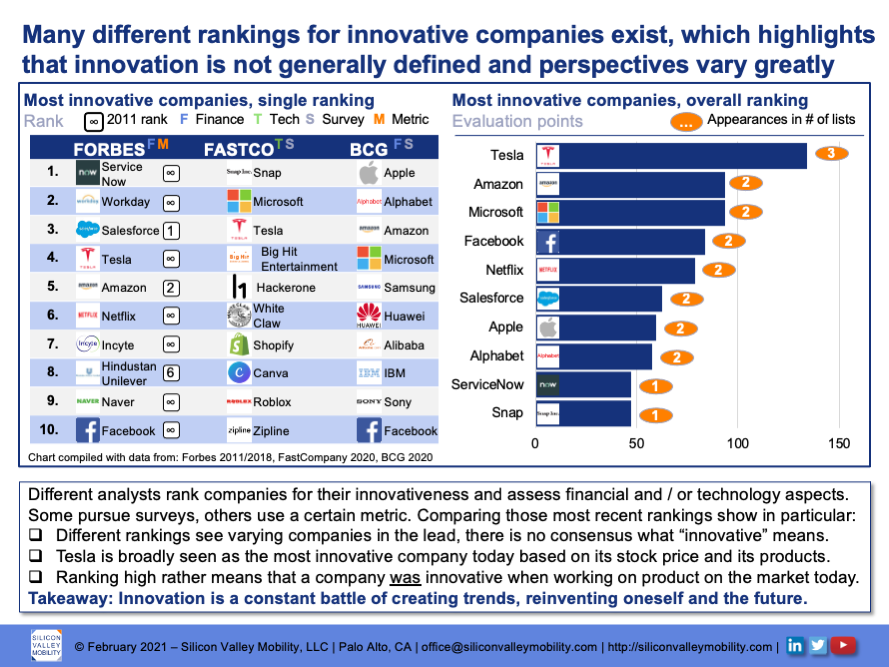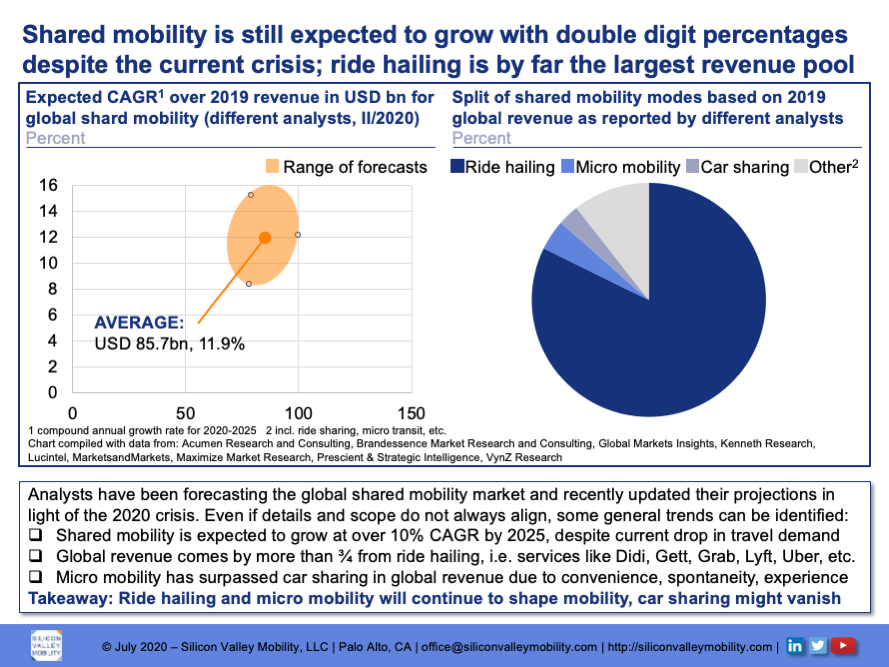Silicon Valley Mobility Chart of the Month, May 2021
From ACES to VTOL – Silicon Valley’s next big thing after autonomous driving
ACES seems to be losing steam, autonomous driving and shared mobility appear to have peaked. So what’s next? eVTOL (electric Vertical Take-Off and Landing) or “flying taxis” are gaining momentum in Silicon Valley and beyond as they fit the profile of “disruptive tech” quite well.
If the promises from the beautiful pitch decks hold true, then eVTOL can totally change the way how we get around and create a new trillion dollar market. Of course, there are also challenges with those hardware-heavy products, lengthy certification processes, and comparatively low volume.
In Silicon Valley there are several contenders going after this new market, some of them have reached unicorn status and gone public via SPAC mergers. It is for sure a field that deserves attention and might be the next big thing in mobility after ACES – besides it being about autonomous, connected, electric, shared as well, just a bit loftier than passenger cars.


